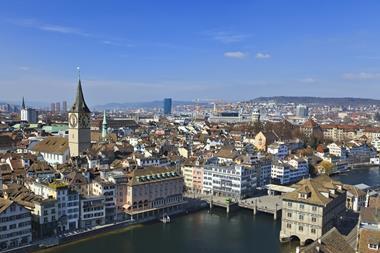The median return for Swiss pension funds stood at 0.7% last year, according to pension fund association ASIP.
As at the end of 2015, the allocation of ASIP’s sample portfolio, as calculated by Towers Watson, stood at approximately 10% domestic equities, 20% foreign equities, 37% bonds and 20% real estate.
Real estate was the chief driver of returns, with direct Swiss property returning 5.3%, indirect Swiss property 5.1% and foreign real estate 3%, respectively, ASIP said.
Commodity investments, accounting for 3% of portfolios on average, fared worst over the period, producing a 23% loss in ASIP’s sample portfolio.
Domestic bonds returned just under 2%, while foreign bonds lost 3.7%, with both asset classes accounting for roughly 18% of ASIP’s model portfolio.
The Swiss pension fund association said many schemes were thinking to increase exposure to equities, real estate and “even alternatives such as infrastructure”, given the investment market for bonds.
It also pointed out that some Pensionskassen had divided their liquidity holdings among various banks to avoid having to pay a negative interest rate, which some banks are demanding above a certain threshold.
ASIP said 2015 would be the last year for which it would calculate an average return, as “there is now a large number of other performance information available”.
For example, the Credit Suisse Pensionskassen index, based on a portfolio of Credit Suisse custodial clients, returned 0.95% over the same period, again due mainly to the performance of real estate, which accounted for 22.37% of the overall portfolio, a record high.
According to calculations made by UBS based on its client sample, the average return for 2015 was 0.7%.
In its sample, real estate was also the best performer and accounted for 27% of the overall portfolio.
Pictet’s 2015 index returned between 0.11% and 0.48%, with higher returns achieved by the portfolios with a lower equity exposure.












No comments yet